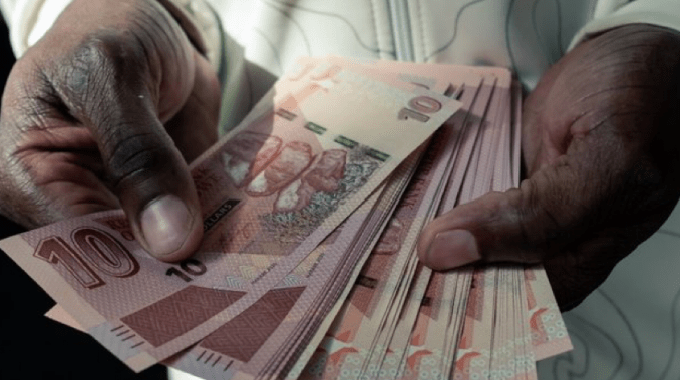Monthly inflation falls as dollar firms

Tawanda Musarurwa
Senior Business Reporter
Monthly inflation between mid-August and mid-September fell to 3,83 percent, according to the latest figures from ZimStat, and is likely to continue falling with yesterday’s foreign currency auction showing almost no change, the local currency firming by a quarter of a Zimbabwean cent to $81,3458.
Exchange rate fluctuations were the main driver of inflation, but since importers have been able to get their foreign exchange requirements through the auction system since the end of June, with exchange rates hardly moving since mid-August, the major inflation driver has disappeared.
Total foreign currency allocation this week jumped to US$29,2 million up from US$26,12 million last week.
This was the second highest total allotment with all valid bids getting their full requirements.
More importantly, the SME auction broke its allotment record to hit US$1,83 million as more businesses in this sector have moved into direct imports rather than relying on bulk suppliers. The main auction saw US$27,4 million bid for and allotted.
In yesterday’s auction, the highest bidder on the main auction offered $88,07 (slightly higher from last week’s $87), while the lowest accepted bid was $79.
On the SMEs auction, the highest offered remained at $86, while the lowest accepted bid was also $79. The slight rise in the top bid coupled with the Zimbabwe dollar firming one three hundredth of one percent, its seventh successive tiny firming, implies that as has now become the norm most bids are within a dollar or two of the final weighted average.
The main auction saw 229 successful bidders with another 26 bids disqualified. On the SMEs board, 153 valid bidders succeeded with another 10 disqualified. Bids are disqualified because bidders want forex for goods and services not on the import priority list, have not completed the paperwork for past exports or imports, or have not exhausted their own foreign currency in their nostro account.
Analysts say the auction system has also resulted in a weakening of demand for the United States dollar on the black market.
“The (official) rate is being determined by the participants in the auction system. Look at what is happening in the parallel market, there is significant pressure for the US dollar to depreciate,” said economist Persistence Gwanyanya.
“There are significant US dollar parcels on offer on the parallel market, which are even failing to find takers.”
Another clear consequence of the foreign currency auction system is the declining month-on-month inflation rate.
The latest ZimStat figures show that month-on-month inflation rate in September 2020 was 3,83 percent well under half the August 8,44 percent.
The Consumer Price Index (CPI) for the month ending September 2020 stood at 2,205.24 compared to 2,123.97 in August 2020 and 290.39 in September 2019. That huge jump in 12 months was almost all in the first 10 months with the last two months being trivial in comparison and both the rapid rise in 10 months and the levelling for two months are directly related to de facto exchange rates, unofficial for several months before the sudden switch to auctions and a new proper market-related rate.
For the past six weeks, the Dutch auction-determined rate has been strengthening, albeit through marginal gains totalling around 2,5 percent. And, critically, the productive sector is optimistic on the progress.
Industry representative body, the Confederation of Zimbabwe Industries (CZI) said current monetary policy measures should be continued:
“If money supply and demand are kept in balance, the auction exchange rate will remain stable and become a predictable reference rate for prices in the economy,” said CZI.
“Stability is settling in and we must stay the course. Keeping our eye on the ball. Ideas and policy options welcome. Some companies that had suspended higher purchase are beginning to bring this back now.”
In line with trends since the inception of the auction system, the productive sectors continue to the biggest beneficiaries of foreign currency allocations.
Yesterday, the raw materials segment accounted for the bulk of the allotments, as is now usual, with US$11,3 million on the main auction and US$546 149 on the SMEs board.
Machinery and equipment came in second with US$4,78 million on the main and US$243 310 on the SMEs, and consumables, in third on the main auction at US$2,37 million.
On the SMEs section, consumables took up US$579 972, possibly showing that the specialised service providers, who tend to be smaller businesses are now importing spare parts and the like directly rather than using runners with a card of black-marker dollars.










Comments